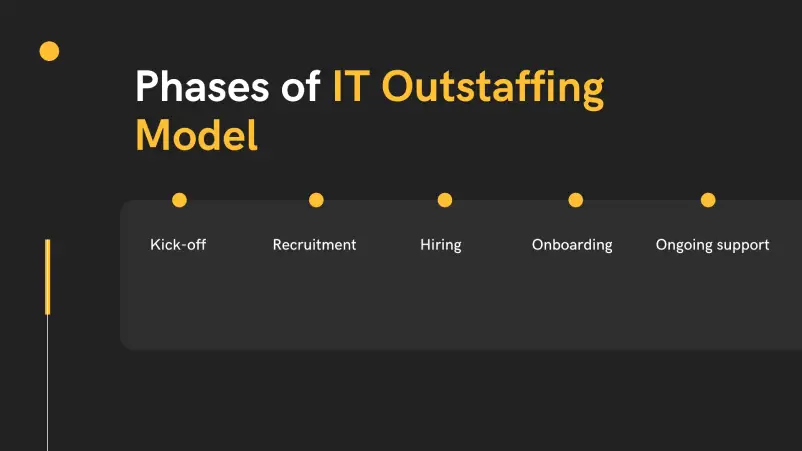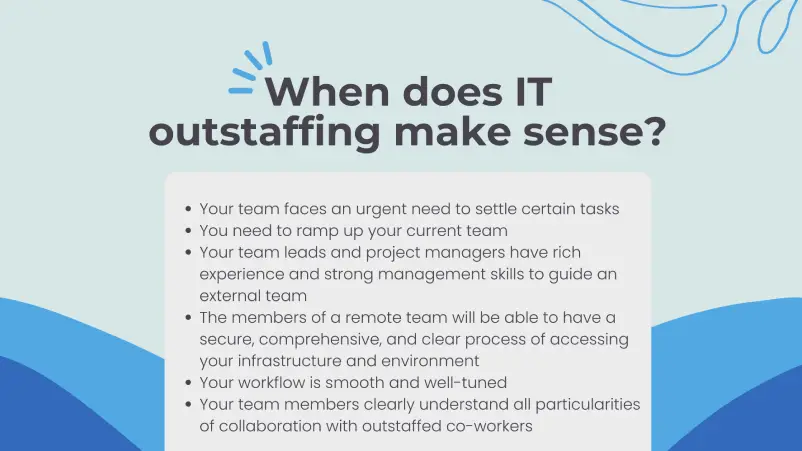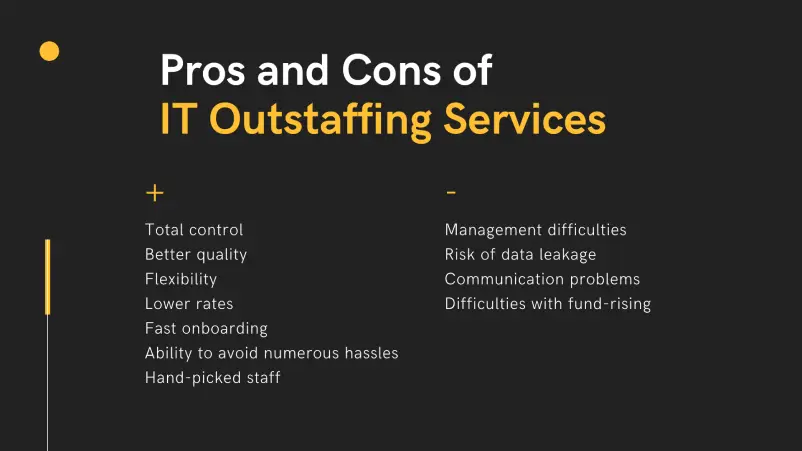Outsourcing to Czechia

How much does it cost to hire developers in Czechia?
Dec 2nd 25 - by Devico Team
Find out how much it costs to hire software developers in Czechia in 2025. Compare hourly rates, roles, and factors that impact pricing.
Hire
Hire by role
Hire Front-end developers
Hire Back-end developers
Hire Full-stack developers
Hire Android developers
Hire iOS developers
Hire Mobile developers
Hire AI engineers
Hire ML engineers
Hire Automation QA engineers
Hire Blockchain developers
Hire Data engineers
Hire Cloud engineers
Hire by skill
Hire JavaScript developers
Hire TypeScript developers
Hire Ruby on Rails developers
Hire React Native developers
Hire Flutter developers
Hire Golang developers
Hire React.js developers
Hire Python developers
Hire PHP developers
Hire .NET developers
Hire Java developers
Hire Laravel developers

Staff augmentation
March 30, 2022 - by Devico Team
Summarize with:
Technology makes the world go round. Thanks to advancements in technology we have made our daily life more comfortable and got numerous opportunities to make work collaboration extremely easy and efficient. For example, today multinational teams are the norm for most IT companies. Remote co-workers are really full-fledged team members. In these terms, outstaffing enables companies not only to engage gems from different corners of the world but to avoid numerous hassles and save some money. Would you like to find out more about the IT outstaffing model? Read on! We have a lot to share with you.
Let’s start with the outstaffing definition. So, IT outstaffing is an efficient method of hiring remote IT staff that suggests collaboration with a third-party company providing you with IT specialists that you currently need. Being employed in the IT outstaffing company the specialists are placed at a client company’s disposal for a period of time stated in a contract.

Now, as you have a general idea about outstaffing, we would like to dig deeper and consider in detail the way in which the outstaffing model works.
The outstaffing model suggests having remote specialists or even teams while not having to establish remote offices or divisions. A client company does not need to bother itself with recruitment, training, accounting, legal, and operational issues, as these are responsibilities of an IT outstaffing service provider. The client company can have complete control over an outstaff team, manage it in a way that it finds appropriate, implement its internal business culture while making active use of the infrastructure provided by the outstaffing partner
As soon as the client company has signed a contract, the vendor company arranges all legal, organizational, and recruiting processes. In essence, as a client company, you can get help with the following procedures:
Staff recruitment
An outstaffing partner searches for IT professionals with the required skills and knowledge, picks up the most suitable profiles, carefully interviews applicants, submits resumes of the best candidates to the client company, and makes a job offer to candidates in case of approval.
Staff on-boarding
An outstaffing partner provides an outstaff team with workspace, equipment, software, and tools needed for work on your project.
On-going support
Your outstaffing partner will stand by your side and assist you with all operational and some project-related issues.
To wrap it up, when the outstaffing model is implemented, a company in need collaborates with an outstaffing partner that, in its turn, finds appropriate specialists, employs them, and provides them with all software and hardware needed for efficient working on the client’s project. The IT specialists are employed in the IT outstaffing company but are managed by the client company.
If you have made a decision to implement the IT outstaffing model, first of all, you need to find a trustworthy IT outstaffing service provider and contact it. Further collaboration usually implies the following phases:
At the opening phase, a client company tells about its business and explains its basic needs while a vendor company decides which of them it can cover. For example, the client may need to augment its team with three senior JS full-stack developers and one senior automation QA engineer. To let the IT outstaffing company find the most appropriate specialists, the client submits job descriptions and comprehensive requirements for candidates (e.g. tech stack, domain expertise, years of experience, the most important soft skills, etc.).
The outstaffing company is completely responsible for the recruitment process. Specialists with the required experience and proficiency level can be provided from the vendor’s own talent pool or its recruiters can get down to custom recruitment, searching for specialists on the job market and arranging interviews with those who seem to be the most suitable. Whenever candidates having relevant experience and meeting corporate culture are found, their CVs with comments are submitted to the client who can additionally interview specialists before arriving at a final decision.
As soon as the client provides positive feedback on the candidates and approves them, the IT outstaffing company makes them a job offer. In such a way, the IT outstaffing company actually deals with payroll, benefits, insurance, taxes, etc., whereas specialists work exclusively on a client's project.
The next step is onboarding. A facility manager of the IT outstaffing company prepares the hardware and software that new specialists need to efficiently perform assigned tasks. On their first day, newcomers go through the onboarding process, get acquainted with a team, gain access to the systems and tools, and become familiar with a project. Now, they are under the management of the client.
During the whole collaboration process, the outstaffing partner stays in touch and provides support. Calls are arranged with a certain frequency to share feedback, access specialists’ performance, and discuss some ongoing operational issues.
When you have a project in progress and need to enlarge your team in order to properly perform certain tasks or meet deadlines, you have a few options. First of all, you can hire new employees to ramp up your in-house team and fill in existing gaps. Secondly, there is an opportunity to entrust some non-core work to an external company, i.e. to outsource some services. Finally, you can hire IT specialists with certain knowledge and experience from another company to work on your project. In this case, we are talking about outstaffing.
So why do businesses opt for outstaffing? There are a number of reasons. A company can enlarge its team without any pain and hassle related to time-incentive recruiting, training, retention, taxing, and many more. Besides, when specialists provided by an outstaff partner get engaged, they are placed at your total disposal. Consequently, compared to outsourcing, outstaffing gives you total control over an outstaff team and a development process. Additionally, it is obvious that outstaffing is definitely more cost-efficient than the employment of new in-house specialists. Compared to outsourcing, outstaffing is also more profitable. The thing is that the outstaffing cost is made up of a vendor fee and an IT specialist's net salary. On the other hand, outsourcing suggests that an outsourcing company is completely responsible for proper job execution.
Therefore, the outsourcing cost also includes costs related to work management.

As you know, there are several business models that can be used when there is a need to engage new specialists, and it is high time to figure out when it makes sense to consider IT outstaffing services. The below-presented list of aspects will help you understand whether it is indeed reasonable to introduce the outstaffing model in your company.
On the condition that you have found that most of the above-listed points are true for your company, it can be reasonable to implement the outstaffing model.
All in all, we strongly recommend you choose a business model having the primary objectives, needs, and abilities of your company in mind. In this case, before arriving at a final decision, a piece of advice from experts will be indeed helpful.
Now, let's structurize the information that we have already discussed and clearly define the main advantages and disadvantages of outstaffing.

Nowadays, IT outstaffing is a widely used business model, and there are many reasons for this. There are many benefits that you can reap from outstaffing. Let’s have a look at some of them.
One of the primary advantages of outstaffing is that outstaffed specialists become full-fledged members of a client’s team. It means that the client company actually manages all working processes. Its team leads or project managers assign tasks to outstaffed team members and supervise their execution. The ability to manage a workflow can be crucial for many companies that prefer to have everything under their complete control.
Compared to outsourced specialists, outstaffed ones work exclusively on a client’s project. Therefore, they totally concentrate on it, and this contributes to the quality and speed of their work. Besides, the fact that the client company supervises their work also fuels specialists’ performance and helps to keep them on the right track.
As software is developed the scope of work can vary. Consequently, from time to time you may face a necessity to ramp up or ramp down your team. With in-house specialists, it is not so easy, while outstaffing provides you with great flexibility in these terms. You can ask your outstaffing partner to provide additional specialists, whenever the workload is high, or you may inform an IT outstaffing company that there is no more need for certain specialists.
Outstaffing enables companies to engage brilliant IT specialists located in different corners of the world. As long as in certain countries an average salary rate can be much lower than in yours, you can save some money. Moreover, compared to outsourcing rates, outstaffing rates exclude management costs.
Staff recruitment can be an effortful and time-consuming process. But outstaffing companies are really good at this. A decent IT outstaffing company can quickly provide you with IT specialists that perfectly match your requirements. Either they can be picked up from its own rich talent pool or custom recruitment can be done.
Cooperation with an IT outstaffing company lets you not bother yourself with numerous issues related to tax payment, insurance, remuneration, perks, vacation pay, staff training, and many more. All this stuff is within the responsibility of your IT outstaffing company. Your only obligation is to make payment according to an outstaffing contract.
The main mission of an IT outstaffing company is to supply your current staff needs. Therefore, its recruitment team does its best to provide you with specialists that perfectly match your requirements. The searching process goes on until specialists with the required qualifications and experience are found.
While outstaffing can bring multiple benefits to you, there are also certain challenges related to hiring an outstaff team.
An ability to manage outstaffed specialists can be considered as both the advantage and disadvantage of this business model. More control comes with more responsibility. Management of a remote team may be rather challenging especially if your PMs and team leads have a lack of such experience. Outstaffing suggests that you are fully responsible for the end product, and you as well as your management staff must be ready for this.
Having outstaffed specialists in a team, you discuss with them some ideas sharing confidential information. So, to protect yourself you should deal with only trusted outstaffing companies, carefully study all the terms and conditions of a non-disclosure agreement, and engage experienced lawyers if needed.
There is also a certain risk in terms of communication. Some cultural differences, a time difference, as well as a language barrier may lead to misunderstanding and poor communication.
Frankly speaking, outstaffing is hardly sufficient for companies striving to attract investors. The lack of your own highly professional staff can be a deal-breaker, as investors usually pay particular attention to a team working on a project. Partnership with an IT outstaffing company may be perceived as a warning that a company lacks the expertise essential for the successful realization of your brilliant idea.

To take maximum advantage of outstaffing you should partner with a renowned and trustworthy IT outstaffing company. These days a great number of companies all over the world offer IT outstaffing services, and it is important to find the one that is reliable, experienced, and compliant with your requirements. To assist you with finding a proper outstaffing partner we have completed a list of aspects that you should take into account.
Having arrived at the decision to use outstaffing services, you should study the global market to understand in which countries outstaffing rates are the most reasonable while the proficiency level of IT specialists is really decent. Traditionally countries of Eastern Europe like Ukraine, Poland, Belarus, etc. are considered to have the best quality-price ratio. In addition, location is also important in terms of time zones. It is vital to partner with a company whose working hours at least partially overlap with yours.
We recommend making a check on a potential outstaffing partner to exclude doubts in terms of its reliability. In these terms, define how long it has been in the business, what awards it has, what companies are among its clients, what rates and feedback it has on the popular and trusted rating platforms, etc. All in all, make sure that the company has a stellar reputation on the market and an incredible track record.
When you collaborate with an IT outstaffing service provider, you expect that a team of experts will be able to get down to working on your project within a short time. Company size has a direct correlation with the speed of onboarding. As a rule, medium and large-size outstaffing companies can provide faster staffing.
Ask your potential partner whether it uses its own talent tool or conducts custom recruitment, how many recruiters it has, what the average time of onboarding is, which retention strategies are used, etc. Answers to these questions can help you understand whether the company has indeed efficient recruiting and HR processes.
The work environment has a great influence on productivity. Therefore, check whether an IT outstaffing company can provide your outstaffed specialists with comfortable workstations and supply any need.
Whenever you partner with a third-party company, there is always a risk related to corporate information security. So it is worth asking questions about security measures that the company takes. Terms and conditions of NDA should also be of your primary interest.
Money matters are always important. That is why in advance ask about the exact cost of recruitment, payment deadlines, payment currency, factors causing cost change, etc.
The importance of communication is often underestimated. However, this is a facet that can immensely affect the success of a partnership. Command of English, corporate policy, cultural aspects, responsiveness are important components of sound business cooperation. Efficient communication also suggests understanding your business needs, asking objective questions, and paying attention to the smallest details. All in all, your outstaffing partner should be able to dive into your problems and provide the best solutions to them.
Speaking about outstaffing, it is just impossible not to discuss how it differs from outsourcing. Many people mistakenly interchange them. In fact, these are two different models of cooperation. What makes them similar is the fact that both of them suggest the engagement of remote and cheaper staff.
The key difference is that outsourcing implies entrusting your project or some scope of work to an external company whereas outstaffing implies hiring certain specialists from another company to augment your team. An outsourced team works autonomously, i.e. you do not need to manage it. As a rule, you just keep informed about the work progress. As for an outstaffed team, you are responsible for its management.
The difference in rates also deserves attention. In general, outstaffing is about 20-30% cheaper because in this case you are not charged for daily team management.
As you see, both models have pros and cons. Which one to choose depends on your needs, goals, and capabilities.
Today it is a common practice to look for IT experts outside own organization and even country. Lower rates are the primary reason. In these terms, outstaffing is considered to be an efficient business model enabling IT companies to augment their teams with real professionals while saving some money and forgetting about issues related to usual staff employment.
Writing this article we had an aim to demonstrate readers the main peculiarities of the IT outstaffing model including the way it works, its advantages and disadvantages, comparison with outsourcing, etc. With all this information in mind, you can come to the right decision whether IT outstaffing services are indeed what you need.
Outsourcing to Czechia

Dec 2nd 25 - by Devico Team
Find out how much it costs to hire software developers in Czechia in 2025. Compare hourly rates, roles, and factors that impact pricing.
Outsourcing to Czechia

Nov 25th 25 - by Devico Team
Compare Czechia and Poland for software outsourcing in 2025. Discover costs, talent, infrastructure, and which country fits your project best.
Outsourcing to Czechia

Nov 18th 25 - by Devico Team
A complete guide to outsourcing software projects to Czechia, learn about costs, talent, benefits, and how to build successful partnerships in 2025.